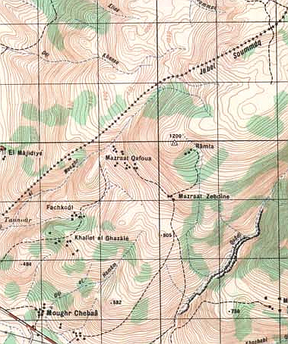Hizballah was formed in 1982 to oppose the Israeli occupation of southern Lebanon following the Peace for Galilee campaign - the military operation to evict the Palestine Liberation Organization from that area. That occupation lasted 18 years, until 2000, when Israel withdrew its forces after a long, bloody guerrilla campaign by Hizballah.
With the removal of Israeli forces, Hizballah had no reason to maintain its militia, a militia that is required to be disarmed according to the Ta'if Accords of 1989 and United Nations Security Council Resolution (UNSCR) 1559 of 2004.
Hizballah stated that they would maintain their militia as part of their resistance to Israeli occupation, citing the presence of Israeli forces in a disputed area called the Shaba' Farms. This piece of land is located a few miles southwest of Mount Hermon (Jabal Ash Shaykh), the highest point in the Anti-Lebanon range on the border between Syria and Lebanon. Israel seized the area in the Six-Day War of 1967 and has held it ever since. The mountain is used by the Israel Defense Force as an intelligence and surveillance site.
 The dispute is whether the Shaba' Farms are Lebanese or Syrian. Most documents identify them as Syrian, including the United Nations maps that are part of the agreement that ended the Yom Kippur War of 1973. Syria maintains that they determined as early as 1964 that the land was actually Lebanese, but has consistently refused to officially delineate the border.
The dispute is whether the Shaba' Farms are Lebanese or Syrian. Most documents identify them as Syrian, including the United Nations maps that are part of the agreement that ended the Yom Kippur War of 1973. Syria maintains that they determined as early as 1964 that the land was actually Lebanese, but has consistently refused to officially delineate the border.
Israel insists that it is part of Syria and thus exempt from UNSCR 425 of 1978, which demands that Israel withdraw its forces from Lebanon. The map to the left is a Lebanese Army map of 1966 that shows the area in question to be part of Syria, however, the Lebanese government (influenced no doubt by Syria) now claims the territory as part of Lebanon.
This is the fig leaf that Hizballah uses to justify maintaining its militia - declaring that the Israeli 2000 withdrawal does not satisfy the requirements of UNSCR 425, so they are not obligated to comply with UNSCR 1559.

.jpg)
